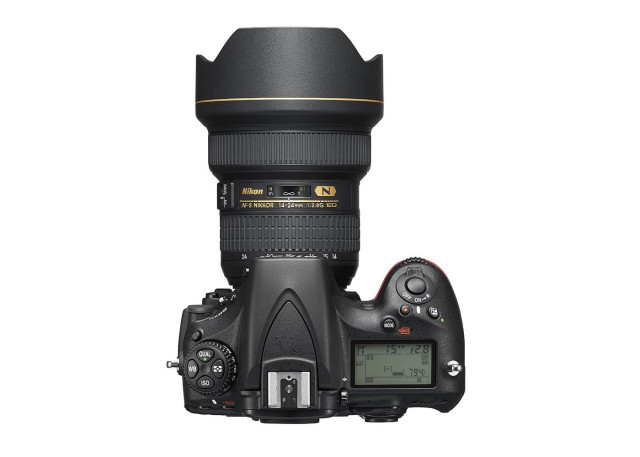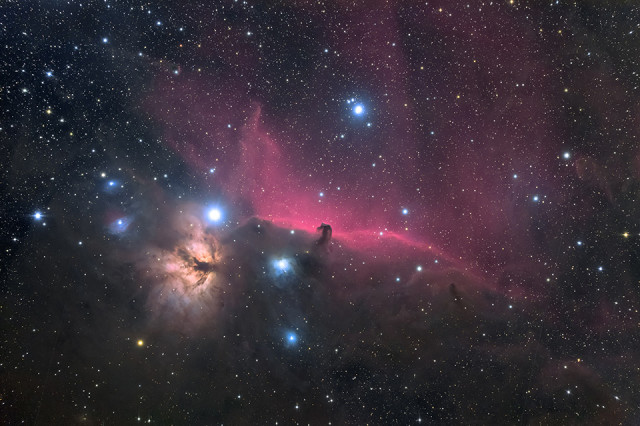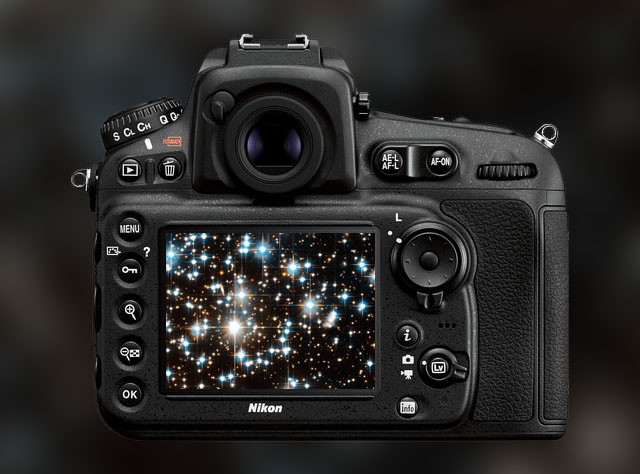
Nikon Corporation, also known just as Nikon, is a Japanese multinational corporation headquartered in Tokyo, Japan, specializing in optics and imaging products.
Apart from Single Lens Reflex (SLR) and Digital SLRs, Nikon recently got into news when they announced the release of their first ultra, high definition model, D810A, designed exclusively for full scale astrophotography. Nikon claims it to offer the best image quality in the history of Nikon digital SLR cameras for incredibly crisp and sharp astrophotography.
As Nikon explains in its press release, this is a camera built for space photography and space photography only. If you were to use the D810A in normal daylight conditions, images would come out with a red cast. So, it clearly states that this camera is meant to take pictures of stars and planets only and not of your partner.
Come, let’s dig deeper into what this space cam has to offer excited photographers. And along with each topic, a special #ForTheLayman comment is added. Forget buying this piece if you go for that comment. *Wink*.

1. The Optical Filter
The images of nebulae and galaxies that emit H-alpha light often appear pale when captured with DSLR cameras which are designed for normal photography.
A customized optical filter (IR-cut filter) that makes the camera 4 times more sensitive to H-alpha light is positioned on the front surface of the image sensor which enables clear and vivid reproduction of strong red H-alpha light emitted by galaxies and nebulae.
#ForTheLayman – You use Photoshop to edit your images because you reflect ugliness at times. And you want to look cool. Think of this camera as the same. A customized Optical Filter added to the DSLR to make dull images look better.

2. Shutter speed and Aperture
Users can select a shutter speed of 1/8000 to 30 sec and for long exposure M* mode: 4, 5, 8, 10, 15, 20, 30, 60, 120, 180, 240, 300, 600, 900 seconds or Bulb or Time, all of which support an unlimited number of shots with continuous shooting.
When exposure time is longer than 30 seconds, a live view preview function makes focusing and composing images much easier with a display of a preview at a shutter speed of 30 seconds.
The kit contains three NIKKOR lenses in popular focal lengths, including the AF-S NIKKOR 35mm f/1.8G ED lens, the AF-S NIKKOR 85mm f/1.8G lens and the AF-S NIKKOR 50mm f/1.8G lens.
#FortheLayman–
- Shutter speed means for how much time the shutter will take to snap. Higher the shutter speed, best quality image there will be when object is in motion. Lower the shutter speed, blurry will be the object in motion. For night photography, the sole purpose of this camera, shutter speed in minutes will yield clear and outstanding images.
- Aperture means how much light is going to enter into the lens to obtain clarity and focus. Smaller the aperture size, more light comes in and thus focuses more on the nearby object making the background blurry. Larger the aperture size, less light comes in and would mean a little more focus on the background too.
3. Pixel count, Sensor and ISO
D810A offers an effective pixel count of 36.3-million pixels and Nikon FX-format CMOS sensor with no optical low-pass filter along with the latest image processing engine, EXPEED 4.
ISO means how sensitive your camera sensor is to light. Higher the number, more sensitive it is making it easier to shoot in low light conditions.
Keeping this in mind, D810A is made capable of supporting a wide range of standard sensitivities, from ISO 200 to ISO 12800, with additional reduction as low as the equivalent of ISO 100 (Lo 1) and the expansion of the equivalent of ISO 51200 (Hi 2).
#ForTheLayman–What amateur people in photography field usually see before buying a camera is how many megapixel it has. And how much can it zoom so that they can capture images far from their sight. Answer: Effective pixels- 36.3 million and sensor size is 35.9mmx24mm. But these two are not the only things to consider while buying. Do some research, you Rookie!

4. Additional Features
- The Clean Image Sensor function is included within Nikon’s Dust Reduction System which vibrates the optical filter at various frequencies to remove dust and foreign matter that may have adhered to it.
- Astrophotography can be troublesome. Like when capturing the surface of the moon. To avoid any such trouble, an electronic front curtain shutter has been installed that effectively suppresses internal mechanical shake leading to perfect snaps.
- For breath-taking photographs over an extended period of time, the battery need to be strong enough to handle the pressure. That is why Nikon decided to install a Li-Ion EN-EL15 rechargeable battery.
- A power saving design will make it possible to capture 3860 still images with fully charged battery.
#ForTheLayman –
- Long battery life.
- You, I assume, take bath to clean yourself. D810A takes Dust Reduction System to remove any dust or dirt on the optical filter.
With Nikon moving a step forward by introducing this brilliant piece, we still have to wait to finally be able to see what exactly it is capable of yielding in the field of astronomy.

Expected release: May 2015
Expected price: $3,799.95 (INR 235,900)
For more and additional information about this product, visit www.nikonusa.com
-By Aayush Gupta
Image Source: Google Images































